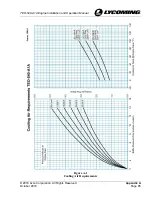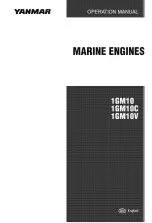
Engine Conditions
© 2018 Avco Corporation. All Rights Reserved
Page 72
October 2018
TEO-540-A1A Engine Installation and Operation Manual
Table 1 (Cont.)
Action for Engine Conditions
Engine Condition
Explanation/Corrective Action
Engine Operation (Cont.)
Manifold pressure decreases
during climb without moving the
power control
The EECS automatically prevents the turbocharger from
overspeed at high altitude by a set limit on the pressure
ratio. Above critical altitude, the EECS continues to
supply the maximum boost possible without exceeding
system limits and without moving the power control.
Loss of boost
Some fault conditions cause a turbocharged engine to
operate as a naturally-aspirated engine. The NTO
annunciators will illuminate if fault conditions occur. If
the fault is transient, boost could continue at a later time
without power control movement. For this reason, do not
decrease the speed more than 50% if the turbocharger
goes back to usual operation.
Engine fuel pump stops
Activate the boost pump to keep the fuel flowing to the
engine for continued operation.
Engine stall
•
Make sure the Fuel Selector is set to the correct fuel
tank.
•
Make sure that the auxiliary fuel pump is
ON
.
•
Cycle the Ignition switch to
OFF
then
ON
.
•
Set the power control to maintain a manifold pressure
of 8 in-Hg (3.9 psi) or more.
•
Make sure that the Ignition switch is set to
ON
.
•
If the propeller has stopped turning, engage the starter.
If the engine restart procedure during flight is not
successful, complete a safe landing. Refer to the POH
for complete procedures on in-flight loss of power.
Engine oscillation (either rpm or
manifold pressure)
Slowly decrease the engine speed or power control until
the oscillations stop. Then slowly return back to the
desired operating point.
Rapid decrease in cylinder head
temperature
To prevent shock cooling, do not operate the engine that
causes the CHT to decrease at a rate greater than 50°F
(10°C) per minute.
Overheating
Decrease power request and/or pitch down to increase
airspeed (and cooling airflow) if possible. If overheating
continues, complete a safe landing as soon as possible.
Overspeed
Refer to the section “Overspeed” in this chapter.
Propeller strike, sudden stoppage
and lightning strikes
Contact Lycoming Engines Technical Support.
Sluggish propeller operation
Complete a safe landing and speak to Maintenance.
















































